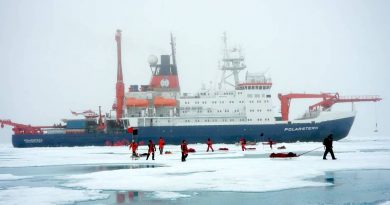Officials monitoring avian flu in mammals in the Canadian Arctic

By Samuel Wat
Nunavut government says it relies on info from local hunters
Wildlife officials tracking the spread of bird flu are looking to do more tests on other animal species.
Nunavut registered its first case of avian flu this year in a northern fulmar found near Resolute Bay on Oct. 3.
That case is connected to a strain circulating in Greenland, according to Jon Neely, operations co-ordinator of Nunavut’s wildlife division.
It’s one of several cases among birds in the North since the outbreak began in 2022, though Neely doesn’t believe the virus is widespread.

In recent months, more reports are emerging around the world of the virus in mammals, including species found in the Arctic.
Brian Stevens, a wildlife pathologist for the Canadian Wildlife Health Cooperative, said one of the biggest changes in the avian flu landscape is the spread among cattle in the U.S.
“There have been a lot more human contacts and human infections related to those dairy cattle infections,” he said.
“That’s when these influenza viruses become more dangerous because, especially in humans, you start to get mixing of our influenza viruses with the avian influenza virus.”
Canada had its first domestically acquired case of avian flu in a human earlier this month. The Public Health Agency of Canada said that case is linked to an ongoing outbreak in poultry in British Columbia.

That outbreak, PHAC said, is not linked to the cattle outbreak south of the border.
Across the country, the virus has spread to 12 species of wild mammals and at least 100 species of wild birds since the outbreak began in 2022, according to Environment and Climate Change Canada.
In Nunavut, five lemmings were tested this year. They came back negative. Neely said test results from one seal is still pending.
More testing among Arctic species
Stevens would like to examine more species from the Arctic — but that comes with logistical challenges.
They have to be sent to the shared Nunavut and Ontario laboratory, based in the University of Guelph, before being sent to the National Centre for Foreign Animal Disease for confirmation.

Then there’s the difficulty of transporting samples of large animals from remote communities, and ensuring locals are trained to do that safely. That’s something Stevens wants to work on.
“Then we’re not putting hunters who aren’t used to dealing with these diseases on the front lines and potentially putting them at risk,” he said.
Related stories from around the North:
United States: Avian flu detected in polar bear in Alaska, CBC News



